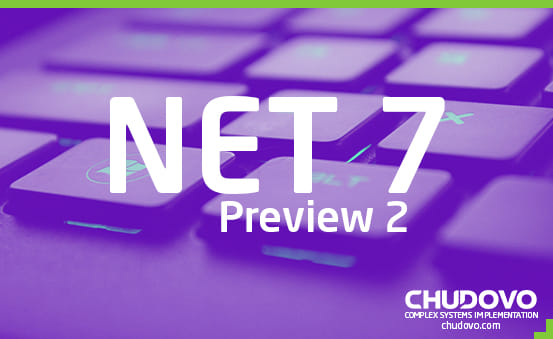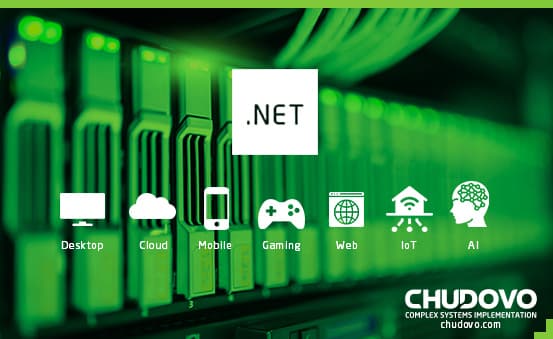What Is New In .NET 7 – 7 New Top Benefits For Developers?
The .NET Framework has been updated to version 7.0 by Microsoft. The main features of this new version are faster startup times, better performance, and shorter compilation times.
This new version was created to address issues in previous framework versions and to add new developer features. In this article, we’ll explore the following :
What is .NET 7 ?
.NET 7 is a development platform that provides a consistent model for developing apps that can run on any device. It has libraries and tools for various programming languages, including C# and Visual Basic.
.NET 7 improves performance and introduces new features for C# 11/F# 7,.NET MAUI, ASP.Net Core/Blazor, and containers for your apps with CI/CD workflows in GitHub actions, allowing for cloud-native observability.
The open-source .NET community helped shape this release by providing 28,000 contributions from nearly 9,900 contributors. Enterprise-grade applications can be developed with the latest .NET version, which is powerful, popular, and reliable.
.NET 7 Release Date
The next version of .NET 7 will be released in November 2022, replacing the current .NET 6 version. Microsoft announced the .NET 7 release date in a blog post stating that .NET 7 will be free to download.
Operating systems for Linux, macOS, and Windows Server will all be supported by the new version. To test the new.NET framework version 7.0, utilize Visual Studio’s most recent preview.
7 Top Features of .NET for Developers
.NET 7 is a major update that includes significant improvements in code generation, new APIs, and better performance. This version has many changes in store for you.
The .NET previews only describe the particularly comprehensive or complex changes, but it’s about time to break things down:
Native AOT (Ahead-of-Time)
Native AOT, a new feature in.NET 7, is one of many enhancements and novelties included in Microsoft’s latest version. Native AOT began as an experimental project but quickly became Microsoft’s primary development focus.
After hearing from many .NET developers, Microsoft has finally decided to provide us with new tools for working with AOT. AOT is a compilation strategy that generates code during the compilation process rather than at runtime.
When the operating system loads its executable code into memory, applications begin to execute. The application data structures are optimized for running AOT-generated code rather than compiling new code at runtime.
Native AOT generates code during the compilation process but in native. It outperforms other translation methods in many ways, including faster startup times and smaller application file sizes.
Native AOT is best suited for environments where startup time is critical.
Microsoft provides ReadyToRun (RTR), a client/server application platform, and Mono AOT for mobile applications. Native AOT will not replace either of these platforms, according to Microsoft.
Comparing NativeAOT to ReadyToRun revealed significant differences in compile time (73% faster) and file size (nearly half as small).
.NET is designed for cloud-native applications.
Cloud-native application development is now simpler than ever. It offers built-in assistance for establishing secure connections to data services and encrypting connection strings in a private user file or Azure Key Vault.
Using LINQ queries to quickly integrate your app with other data sources and extract content from JSON documents stored in SQL Server, your app can be built directly into a container image.
You can deliver secure JSON documents through authenticated endpoints using Minimal’s APIs with just a few lines of code. They also provide information about your running application using Open Telemetry.
Microsoft wants to make the process of developing cloud-native applications simpler by streamlining authentication and authorization. They are also looking to improve how quickly apps start up.
Upgrading Assistance
Upgrades to the latest .NET version have frequently been complex, and Microsoft is attempting to alleviate the pain by introducing new upgradeability enhancements for legacy code.
The Microsoft Update Assistant will support additional use cases with the upcoming release of .NET 7 preview, making it even easier for developers to upgrade existing .NET 7 applications.
The.NET Upgrade Assistant provides guidance, insights, and automation to help you upgrade your legacy apps to.NET 7. Microsoft’s .NET upgrade assistant and application compatibility framework will significantly reduce the time required to update legacy applications, allowing developers to focus on more critical projects.
.NET Multi-Platform App UI (.NET Maui)
The latest .NET version will include .NET MAUI, which simplifies cross-platform native.NET UI development. It’ll improve internal development loop performance, support the latest SDK tooling versions, enable faster app start times by improving memory usage—and, most importantly, share more code across platforms.
.NET MaUI improved CollectionView performance, addressed top feedback reports, and introduced desktop features that were previously only available on mobile. The first stable version of.NET MAUI, which has been available in preview form since February, is included in the release of Visual Studio 17.4.
This release addresses the top feedback issues and introduces new features for desktop developers. One of your strongest desires has been to see improvements in the widgets’ quality. This update contains several fixes for essential UI elements like buttons, lists, and layouts.
The.NET MAUI Map control is a cross-platform abstraction of the native map control for each platform. This, like other UI controls, was updated from Xamarin Forms.
The map supports pins, custom pins, and drawing polygons and lines on its map. It also lets you launch the native map application on your device when pinning something there.
It has optimized the rendering path for basic views and addressed several issues affecting the smoothness of CollectionView list control scrolling.NET Maui for.NET 7 outperforms.NET 6. One of MAUI’s changes was to include enhancements based on their use cases, including window size and position, context menus, tooltips (for mouse hover), and right-click
Blazor
Blazer has undergone many changes. It now supports WebAssembly by default, so you no longer have to set up your development environment or install any dependencies. Secure HTTPS connections are supported by default, and the latest versions of Chrome and Firefox can be used.
Blazor now supports .NET Core 2.2, which includes many new features and improvements, such as support for .NET Standard 2.0 and cross-platform compilation to WebAssembly via Mono/.NET Core.
Blazor Hybrid Support lets us take existing Blazor components and put them together into a desktop application using a web view control that has access to all underlying hardware APIs—something we can’t do in the browser.
Web developers can make desktop applications that take advantage of the computer’s functionality, such as reading files or using the webcam.
Blazor Hybrid Support is also helpful for creating user interfaces that are consistent across multiple platforms. It lets us use the same HTML/CSS code base to build browser-based and desktop applications, so we don’t have to maintain two different code bases for each platform.
This is especially useful when accessing native features, such as touch input or file system access. This lets us build desktop apps that work offline, have access to all the hardware APIs, and are secure.
Blazor has incorporated many of the.NET 7 improvements, such as support for handling location change events and improved debugging tools. Its components can be used alongside any JavaScript application by creating standard HTML elements.
Command Line Performance
Performance is prioritised in frameworks such as.NET 7. In .NET 7, Write-Xor-Execute has been used to reduce the number of changes needed in executable code.
Write-Xor-Execute (W^X) is a form of protection that enforces write access to memory pages. This restricts the code’s ability to be written or executed unless it has been specifically marked as executable by the operating system.
This is because the code cannot be written to run without permission, making it harder for malicious actors to write code that executes without permission. In.NET 7, this method was used to reduce the number of changes required in executable code.
This means that it is harder for malicious actors to write code that executes without permission. This is a common practice for malware authors who want users’ computers to perform harmful tasks without the user knowing about it.
A new technique prevents both writable and executable memory areas from being used. NativeAOT and macOS will get it later, but high-throughput applications may benefit for now.
Because runtime environments can alter code while running (using on-stack replacement), they offer an additional boost to the benefits of staged compilation.
On x64 and Arm64 systems, it’s enabled by default. Using OSR (on-stack replacement), long-running methods can be switched to optimized versions during execution, allowing the runtime environment to compile all forms quickly before switching over.
In applications that heavily use the JIT compiler, startup times were 25 percent faster. Other tests showed an approximately 10 to 30 percent improvement.
According to Microsoft, they are using System.Reflection to invoke an element such as a method or property that has less overhead than before (no numbers are provided). .NET 7 also provides significant performance improvements for developers.

Certified engineers
Convenient rates
Fast start
Profitable conditions
Agreement with
EU company
English and German
speaking engineers
General refactoring of loops and a loop in the Pre-Header (a section at the top of an EXE containing metadata such as versioning info) means that Kestrel can now process more requests per second due to thread-safe queues in the system.
Before the change, the C# keyword “lock” ensured that only one thread had access to TCP connections at any given time.
Analyzer
We now have a new analyser. The new analyser comes with.NET 7 and looks for places where regular expressions could have been generated using the RegexGenerator source generator.
This is a useful feature when you have a lot of regular expressions in your codebase and want to find places where they could be automatically generated quickly.
The analyzer will detect uses of the regex constructors and static methods when they’re used in a way that meets these conditions:
- The values supplied to the source generator must be known at compile time since these same values determine what output is generated.
- The new analyser is part of an app targeting .NET 7. It ships inside the .NET 7 targeting pack, and only apps that target this platform are eligible for this check.
- The LangVersion (learn more) must be set to at least 10 for the regex source generator extension.
Conclusion
This latest version of the.NET platform has a lot to offer.NET developers. .NET is a viable option for future software development teams because of its features. Microsoft has been doing everything possible to keep .NET a fixture in the programming world for many years.
Aside from all of these new features, though, what’s arguably most exciting about this framework is that it will continue to evolve. Microsoft will continue adding new features to the framework, so developers can count on having access to the latest and greatest development tools moving forward.





